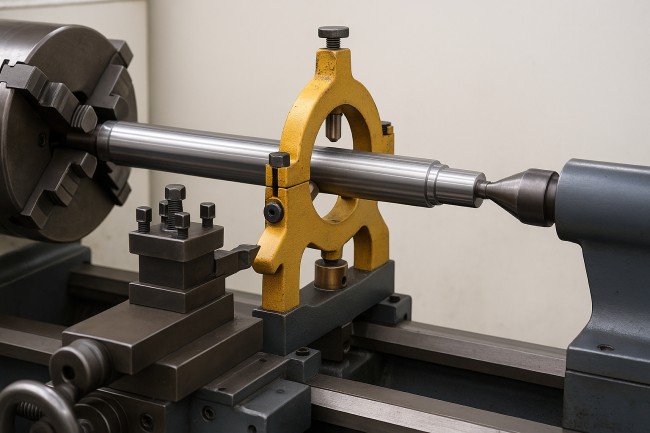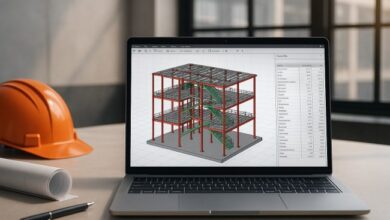Workpiece Support in Turning Operations

Turning operations, essential for creating everything from simple pins to complex aerospace parts, rely on workpiece stability for quality results. Improper support can lead to defects, making it a critical factor in precision manufacturing. This guide will cover the key support methods and considerations to ensure both precision and safety in turning.
Understanding Turning Operations
Before we look at support methods, let’s quickly recap the turning process. Turning is a machining process where a cutting tool, typically non-rotating, moves along the axis of a rotating workpiece to remove material and create a cylindrical shape. It’s performed on a lathe, a machine that holds and rotates the workpiece at high speeds.
The primary goal is to achieve specific dimensions, a smooth surface finish, and tight tolerances. However, the forces exerted by the cutting tool can cause the workpiece to deflect, vibrate, or even break if it’s not adequately supported. This is particularly true for long, slender parts or when performing heavy cuts. Proper workpiece support is therefore not just a best practice—it’s a necessity for successful turning.
Common Workpiece Support Methods
Several methods are used to support a workpiece during turning, each suited for different scenarios. The choice depends on the workpiece’s length, diameter, material, and the type of operation being performed.
Chucks
Chucks are the most common work-holding devices on a lathe. They are mounted on the headstock spindle and use jaws to grip the workpiece.
- Three-Jaw Chucks: These are self-centering, meaning all three jaws move simultaneously. They are ideal for quickly clamping round or hexagonal workpieces. While convenient, they may not offer the highest level of concentricity for precision work.
- Four-Jaw Chucks: Each jaw on a four-jaw chuck moves independently. This allows for gripping irregularly shaped parts and achieving very high concentricity, as each jaw can be adjusted to center the workpiece perfectly. This process requires more skill and time but is essential for high-precision tasks.
Collets
Collets are another type of chuck that provides a very strong and accurate grip on the workpiece. A collet is a sleeve that fits around the material and is tightened by a drawbar. Because they make contact around the entire circumference of the part, collets offer excellent concentricity and are ideal for holding small-diameter workpieces or for high-production runs where quick clamping is needed.
Centers
When a workpiece is too long to be supported by a chuck alone, centers are used to provide support at the opposite end.
- Live Centers: Located in the tailstock, a live center has bearings that allow it to rotate with the workpiece. This reduces friction and heat buildup, making it suitable for high-speed turning operations. The tip of the center fits into a pre-drilled “center hole” in the end of the workpiece.
- Dead Centers: A dead center is a solid piece of hardened steel that does not rotate. The workpiece rotates against its tip, which requires lubrication to prevent friction and wear. Dead centers are highly rigid and can provide excellent accuracy but are typically used at lower speeds.
Faceplates and Angle Plates
For workpieces that are irregularly shaped and cannot be held in a chuck or between centers, a faceplate is used. A faceplate is a large, flat disc that mounts to the headstock spindle. The workpiece is then clamped or bolted directly to the faceplate, often with the help of angle plates and counterweights to ensure the setup is balanced.
Steady Rests and Follower Rests
For very long and slender workpieces, additional support is needed along the length to prevent deflection and vibration.
- Lathe steady rest: A steady rest clamps to the lathe bed and has adjustable fingers (usually three) that support the workpiece at a fixed point. It is used to support the end of a long part when a center cannot be used, or to provide intermediate support along its length.
- Follower Rests: A follower rest attaches to the carriage of the lathe and moves along with the cutting tool. It typically has two adjustable fingers that provide support directly opposite the cutting force. This is crucial for maintaining diameter consistency on long, thin shafts, as it prevents the workpiece from pushing away from the tool.
The Importance of Choosing the Right Support
Selecting the appropriate support method is critical for several reasons:
- Accuracy: Proper support ensures the workpiece remains rigid and stable, allowing the cutting tool to produce accurate dimensions and a consistent diameter along the entire length.
- Surface Finish: Vibrations, or “chatter,” are a common problem in turning, especially with long workpieces. Effective support dampens these vibrations, resulting in a smoother, higher-quality surface finish.
- Safety: An inadequately supported workpiece can come loose or break during rotation, posing a significant safety risk to the operator and potentially damaging the machine.
- Tool Life: Excessive vibration not only affects the workpiece but also causes premature wear on the cutting tool. Stable machining conditions lead to longer tool life and reduced tooling costs.
Factors to Consider for Workpiece Support
When planning a turning operation, several factors must be considered to determine the best support strategy.
- Length-to-Diameter Ratio: This is the most critical factor. A general rule of thumb is that if a workpiece’s length is more than three times its diameter, it will likely require tailstock support. If the ratio exceeds ten to one, a steady rest or follower rest is often necessary.
- Workpiece Material: Softer materials like aluminum or brass are more prone to deflection than harder materials like steel. They may require more support, even on shorter lengths.
- Type of Operation: Heavy roughing cuts exert significant force on the workpiece and demand robust support. Finishing cuts are lighter but still require stability to achieve a good surface finish.
- Required Tolerances: For high-precision work with tight tolerances, the setup must be as rigid as possible. This might mean choosing a four-jaw chuck over a three-jaw, or using a follower rest for long shafts.
- Workpiece Geometry: The shape of the part will dictate the holding method. Irregularly shaped items may necessitate the use of a faceplate or specialized fixtures.
Conclusion
Now that you have a better understanding of the key factors to consider when setting up a lathe, you can confidently approach any turning project with success. Remember to always prioritize safety and stability in your setup, and don’t be afraid to experiment with different techniques and tools to find what works best for your specific project.



